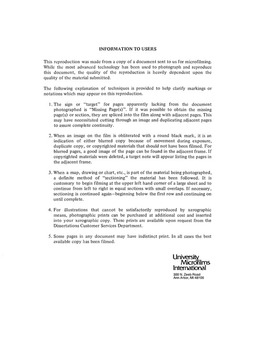| dc.contributor.author | Rahali, Boubekeur, | en_US |
| dc.date.accessioned | 2013-08-16T12:29:18Z | |
| dc.date.available | 2013-08-16T12:29:18Z | |
| dc.date.issued | 1984 | en_US |
| dc.identifier.uri | https://hdl.handle.net/11244/5301 | |
| dc.description.abstract | The unconstrained model, and its solution technique can be easily modified to solve the limiting case where all facilities are fixed points, and also the case when metric constraints are added. | en_US |
| dc.description.abstract | Examples are solved to show the impact of assuming area demands, the conflicting nature of the minimax and minisum criteria and to illustrate the solutions techniques developed. | en_US |
| dc.description.abstract | A minimax objective function constrained by a bound on the total average cost of servicing all existing facilities (minisum function) is then discussed. Using duality properties, this problem is shown to be equivalent to another model which minimizes the minisum function subject to a bound on the same minimax function. This last problem proves to be easier to solve, and a specialized solution technique is developed. The resulting solutions are nondominated solutions in relation to the two criteria involved. Another way to generate nondominated solutions is by combining the two functions into a weighted sum. The constrained criterion method is shown to be superior both analytically and practically. | en_US |
| dc.description.abstract | Most probabilistic facility location problems investigated to date were variations of the generalized Weber formulation. In this research, several single facility minimax location models are analyzed, where both the weights and the locations of the existing facilities are random variables. The demand points are uniformly distributed over rectangular areas, the rectilinear metric is used and the weights are assumed to be independently distributed random variables. Two unconstrained probabilistic models are analyzed and compared to the centroid formulation, it is seen that the probabilistic models are sensitive to deviations from optimal solutions. An expected value criterion formulation is also presented along with lower and upper bound approximating functions. | en_US |
| dc.format.extent | x, 143 leaves : | en_US |
| dc.subject | Engineering, Industrial. | en_US |
| dc.title | An analysis of minimax facility location problems with area demands / | en_US |
| dc.type | Thesis | en_US |
| dc.thesis.degree | Ph.D. | en_US |
| dc.thesis.degreeDiscipline | School of Industrial and Systems Engineering | en_US |
| dc.note | Source: Dissertation Abstracts International, Volume: 45-10, Section: B, page: 3301. | en_US |
| ou.identifier | (UMI)AAI8500628 | en_US |
| ou.group | College of Engineering::School of Industrial and Systems Engineering | |
